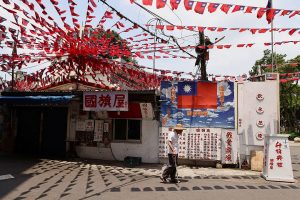Financial education sought to boost microinsurance growth

More Filipinos are using microinsurance for affordable protection, but increased financial education is needed to propel its growth, the Philippine Insurers and Reinsurers Association (PIRA) said.
“Imagine comparing buying a family-sized Coke to a solo-sized Coke. That’s the principle. It operates more like an assistance product, which is why its penetration seems to be superior,” Michael F. Rellosa, executive director of PIRA, said in an interview with BusinessWorld on Tuesday.
Owing to its affordability, microinsurance is more accessible to poorer Filipinos than traditional insurance, he noted.
Microinsurance daily costs cannot be more than 7.5% of the daily minimum wage for a non-agricultural worker in Metro Manila, according to Republic Act No. 10607.
The maximum sum of guaranteed benefits is not more than 1,000 times of the current daily minimum wage rate for nonagricultural workers in Metro Manila, according to the law.
“For instance, if you own a house, under standard insurance, you’d insure it based on the construction cost, say P1 million. In contrast, microinsurance provides a smaller sum, maybe P50,000 in case of a fire,” said Mr. Rellosa.
Mr. Rellosa noted that during Tropical Storm Ondoy in 2009 , microinsurance helped many from poorer sectors. “Not necessarily enough to reconstruct their homes but sufficient to tide them over during challenging periods.”
“Previously, regular insurance was less accessible due to its high cost, often being the last priority. Here, you can obtain coverage for a minimal amount. Are the premiums around P20-P30? It’s designed to be affordable even for the daily wage earner,” Mr. Rellosa noted.
Claims processing is swifter in microinsurance compared to traditional insurance. The former can settle claims within ten days, while the latter involves more complex bureaucratic processes, Mr. Rellosa said.
“The cost is lower, and the payout process is quicker and simpler,” he also said.
But managing microinsurance can be challenging for insurance companies due to the small premiums and the vast number of policyholders.
“From an insurance company’s perspective, administration can be taxing. Given the tiny premiums and the extensive clientele, advanced technology is crucial for effective management,” Mr. Rellosa said.
CONTINUED GROWTHInsurance providers are venturing into diverse microinsurance areas, noted Mr. Rellosa.
“Previously, there was predominantly one type. Now, we are exploring varied coverages. There are also dedicated microinsurance firms like CLIMBs (CLIMBS Life and General Insurance Cooperative) and 1-CISP (1 Cooperative Insurance System of the Philippines Life & General Insurance), operating through cooperatives,” he added.
“There are also companies that are pure micro insurance such as CLIMBs (CLIMBS Life and General Insurance Cooperative) and 1-CISP (1 Cooperative Insurance System of the Philippines Life & General Insurance). They do this through cooperatives,” Mr. Rellosa said.
Advancements in insurance technology is also expected to further propel microinsurance’s growth, he noted,
In this year’s second quarter, premiums from microinsurance policies surged by 22.68% year-on-year to P6.7 billion, as per the Insurance Commission (IC) data.
In comparison, the 2020 gross premiums for microinsurance stood at P1.6 billion.
IC statistics also showed a 7.16% growth in the lives covered by microinsurance policies by the end of June, reaching 52 million.
“It’s been on the rise, constantly but in small increments. What’s really needed is financial literacy. More people need to know about it,” Mr. Rellosa said.
The IC has emphasized the importance of microinsurance as a tool for financial inclusion, especially for low-income earners, helping them mitigate risks like death, injuries, and damage to assets or livelihood.
“Microinsurance encompasses micro-life, health, and agricultural insurance. There are also micro pre-need products available, like micro-memorial, educational, and pension plans,” the IC said in a statement. — Aaron Michael C. Sy
![Photo of [EXPLAINER] Availability of HIV prevention pill in the Philippines](https://redstateinvestings.com/wp-content/uploads/2023/03/explainer-HIV-prevention-pill-300x169-J6cSYR.jpeg)



